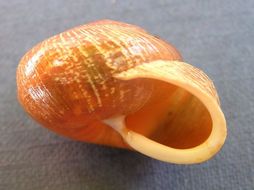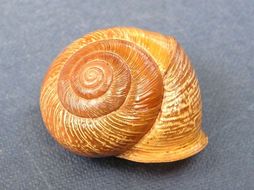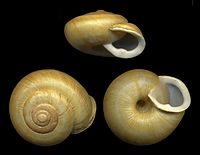Allogona profunda (Say)
Broad-banded Forestsnail
Adaptation
The hibernating epiphragm, which is a temporary structure made of mucus that seals off the shell, is used during inactivity by these snails, Allogona profunda (Say), in order to reduce water loss (Blinn, 1963). Also, this particular snail possesses the aperture-upward orientation in hibernation (Blinn, 1963).
During a study performed by Walter C. Blinn he observed the snail, Allogona profunda (Say) performing an autumnal homing to its winter quarters where it spends its period of hibernation (Blinn, 1963). Also, hibernation was observed to last around 6 months for this species of land snail, Allogona profunda (Say) (Blinn, 1963).
Allogona profunda (Say), possesses the aperture-upward orientation which is an adaptation by these snails which during dormancy allows for the collection of water in the aperture (Blinn,1964). This water primarily serves as a stimulant that make this snail react by extending from its shell, and then once the water is taken into the mantle cavity, it effects the rapid hydration of the snail (Blinn, 1964).
After his experiment upon snails pallial water, which is the water located in the snails mantle cavity, the observations supported the hypothesis that Walter C. Blinn stated, which is the mantle cavity functions as a lung and also serves as a reservoir for water (Blinn, 1964). This mantle cavity is where water is stored when these snails have taken excess water into the body, and they also utilize this water when daily life depresses their body hydration (Blinn,1964). These snails have adapted to do this in order to guard against water stress from things such as mucus production, or droughts even (Blinn, 1964).


